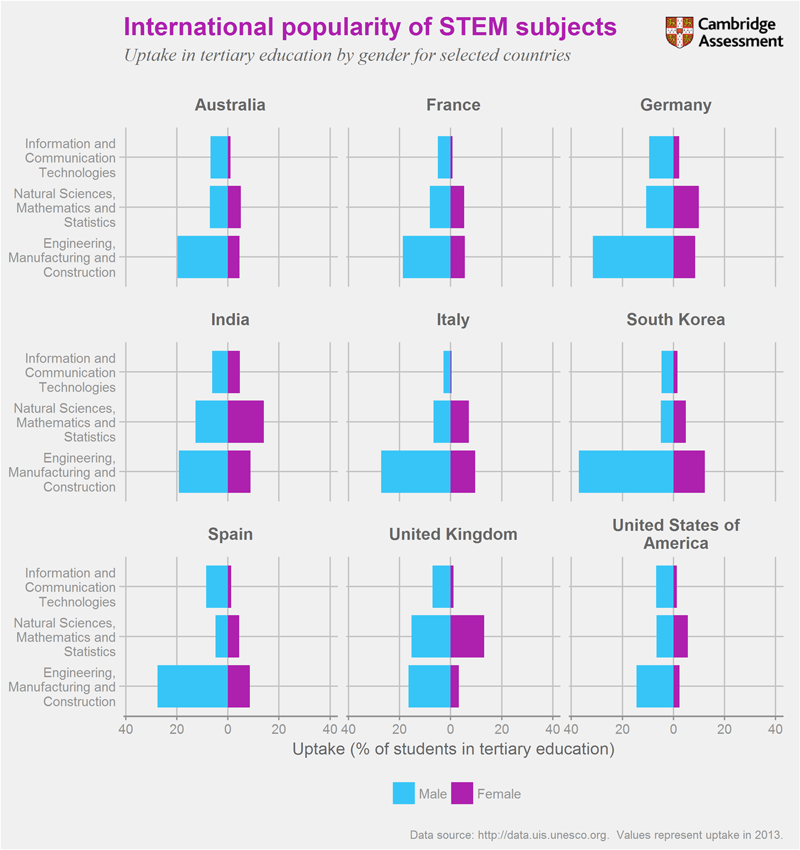February 2017
Summary
In their 2012 report on Higher Education in Science, Technology, Engineering and Mathematics (STEM) subjects, the House of Lords Select Committee on Science and Technology noted that “the jobs of the future will increasingly require people with the capabilities and skills that a STEM education provides.” Policy makers in the UK are therefore keen to increase the number of students studying these subjects, motivated in part by concerns about international economic competitiveness.
STEM subjects are diverse and uptake varies widely by country, subject, and gender. In this Data Byte we present the uptake of STEM subjects in nine of the world's largest economies and highlight the differences between the sexes in students choosing to pursue these subjects at tertiary level.

What does the chart show?
The charts show the uptake of STEM subjects within the world’s nine largest economies (by GDP) for which data are available. Each plot shows the percentage of students in tertiary education who chose to study one of the subjects, divided by gender. Subjects have been grouped according to the broadest category of the International Standard Classification of Education fields of education and training; tertiary education includes college, university, and vocational courses.
The data are taken from the UNESCO’s UIS.Stat database. We have chosen to present data from 2013 as this is the latest year that includes data from the United Kingdom and the world’s largest economy, the United States of America.
Why is the chart interesting?
The charts first illustrate the overall popularity of STEM subjects among students in tertiary education. Within the selected countries, STEM subjects are most popular in Germany where 36 percent of students study these subjects. Conversely, only 19 percent of students in the United States of America study these subjects. Engineering, Manufacturing, and Construction is the most popular subject category in all selected countries except the United Kingdom, where Natural Sciences, Mathematics and Statistics is the leading choice.
Differences in uptake by gender are also visible. STEM uptake rates are greater for men than for women in all countries; the difference is greatest in Germany and smallest in India. Of the three subject groupings presented, the smallest difference in uptake between the sexes over all of the countries presented is in Natural Sciences, Mathematics and Statistics; the greatest difference is in Engineering, Manufacturing and Construction.